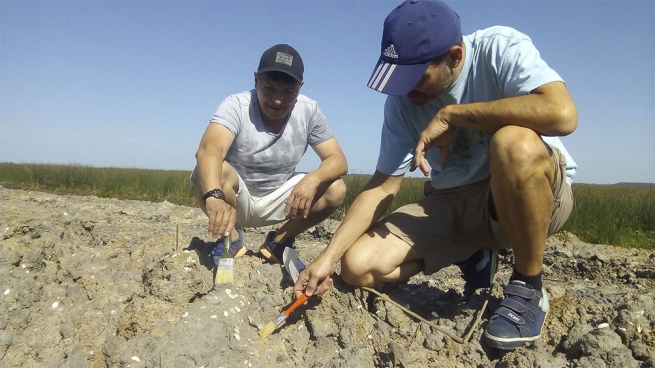Hundreds of bone pieces that were inside the dermis of sloths of about 20,000 years old They were found in a tosca extraction quarry by a team of paleontologists who work in the Buenos Aires district of San Pedro, the Paleontological Museum of that district reported on Saturday.
The small bone pieces, whose size varies between 2 and 12 millimeters in diameter, were observed in sediments whose age for the area is estimated to be greater than 20,000 years.
The discovery was made on the premises of the firm Tosquera San Pedro, located about 5 kilometers from the town of San Pedro.
“The osteodermsas these small bones are called, were bone formations generated by the skin of certain genera of giant prehistoric sloths such as Mylodons and Glossoterians, although they were absent in other giant sloths such as Megatheriums and Lestodons,” said José Luis Aguilar, director of the Museum.

He also assured that among the tissues of their thick skin, “these animals developed these hard balls as a defense strategy against the attack of their predators that were like cell packs that grew to the size of a bean, and then ended up generating a kind of flexible but very resistant mesh”.
He indicated that 770 were discovered of these tiny bony formations.
Luciano Brambilla, a researcher at the Center for Interdisciplinary Studies of the University of Rosario, said that “the discovery in a deposit of a cluster of osteoderms denotes the presence of a mylodontine-like animal, since these osteoderms covered practically the entire body of that group of giant sloths in Argentina at the end of the Pleistocene.
“There is evidence of coating on the feet, tail, torso and head. Its precise function continues to be reviewed as, in addition to functioning as armor for strengthen the thick skin of these animals, they have been identified as calcium reserve in these large mammals,” said the scientist.
The sample highlights the fglobose forms and rounded edges among which there are exceptions with sharper edges that, as a whole, can help characterize the genus of sloth to which they belonged.


















